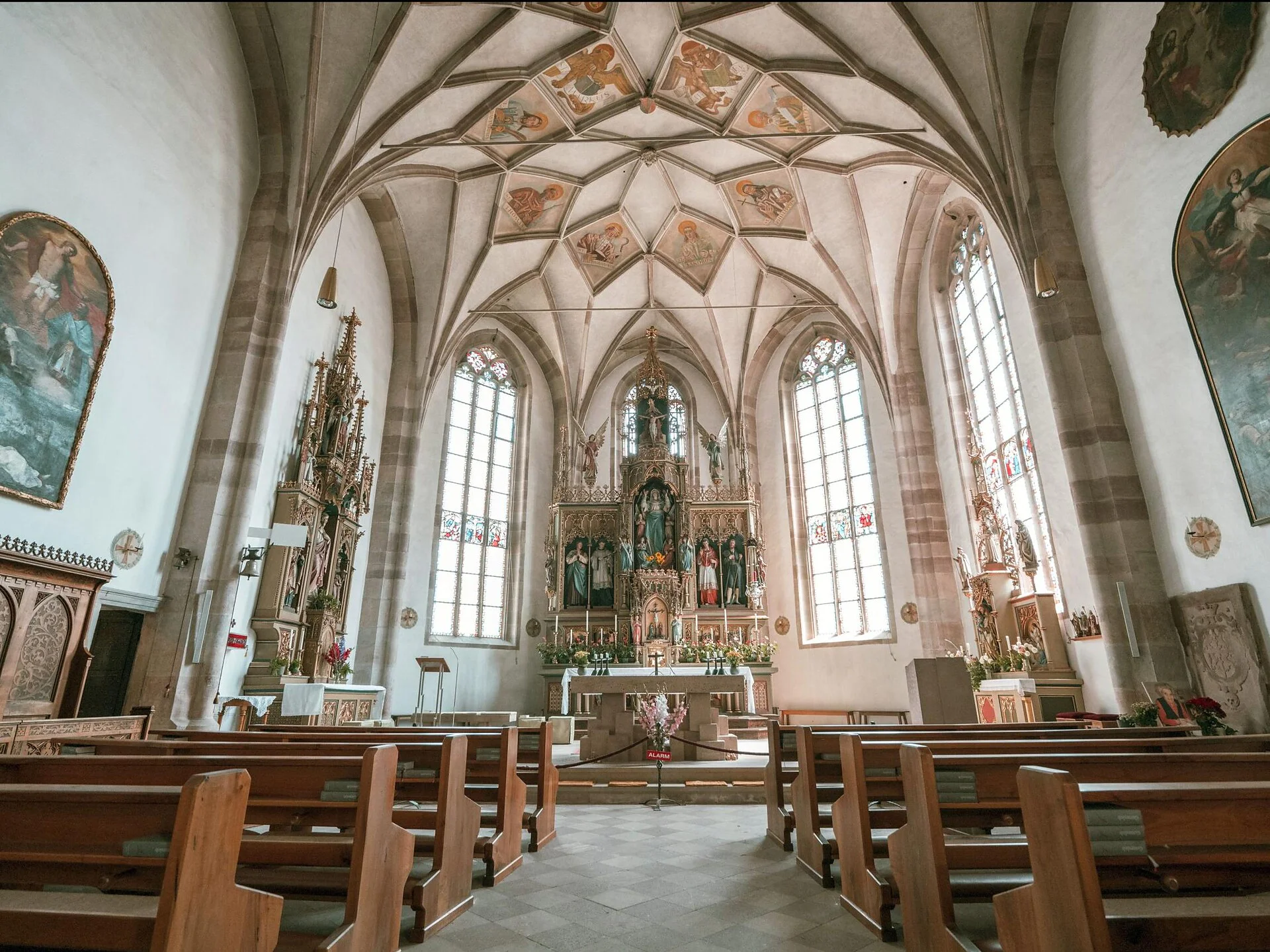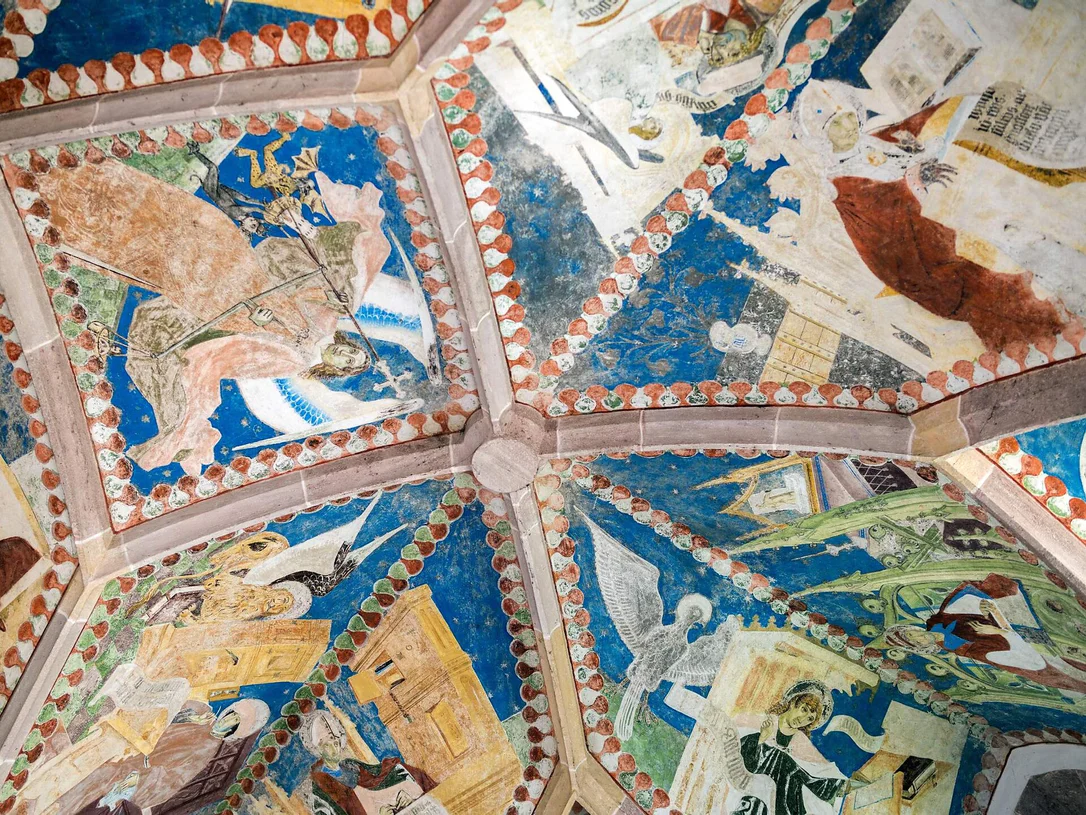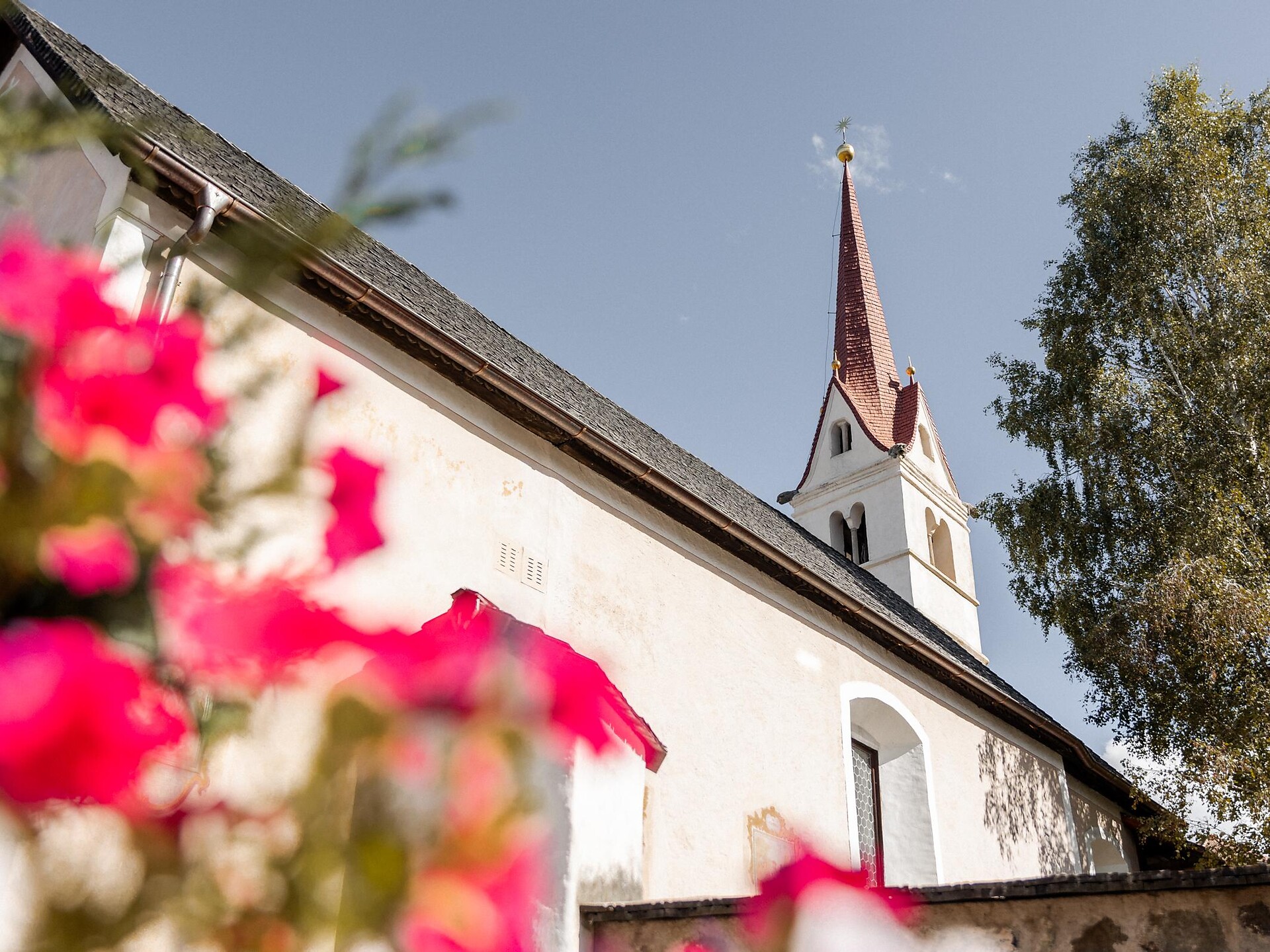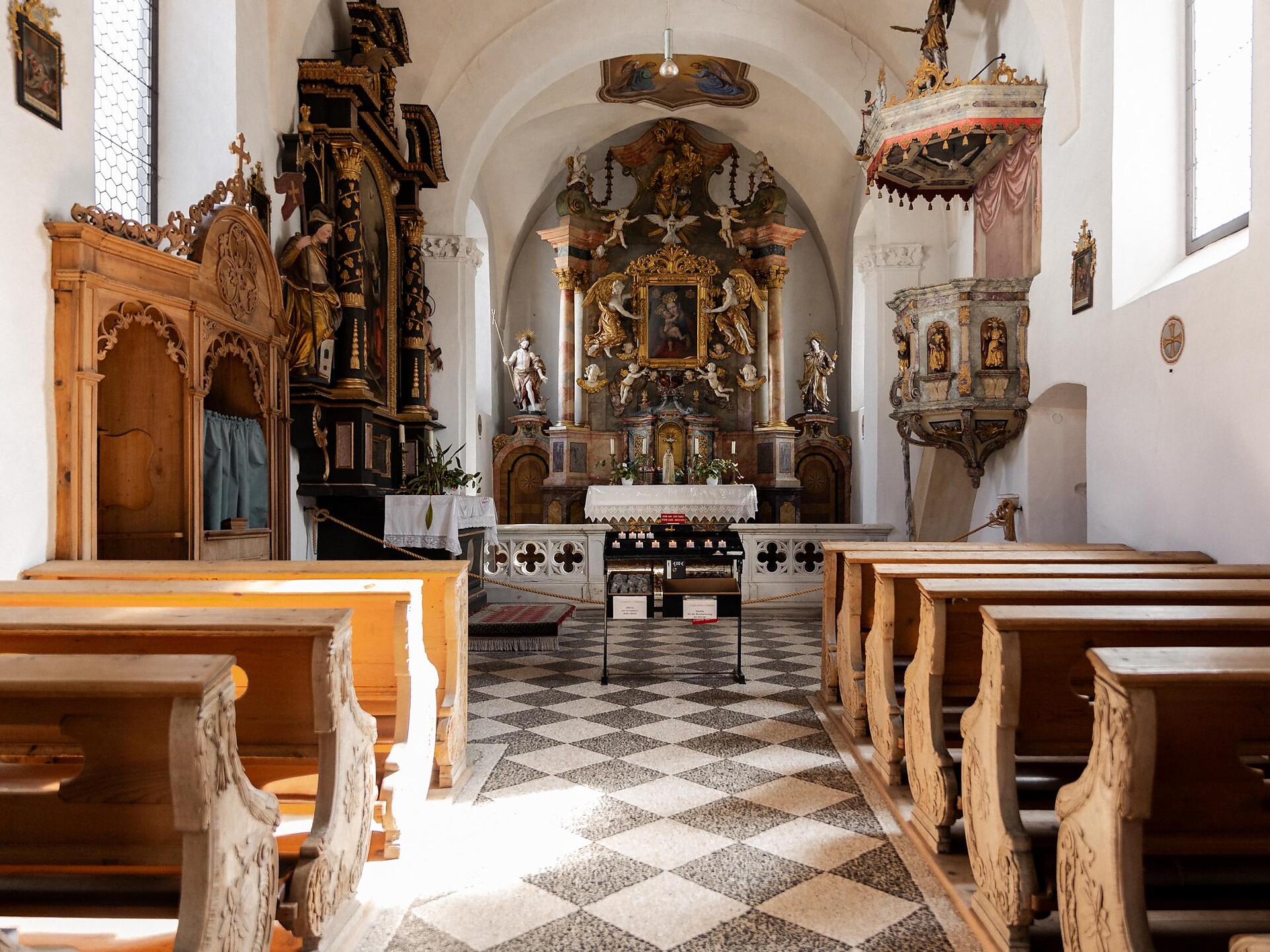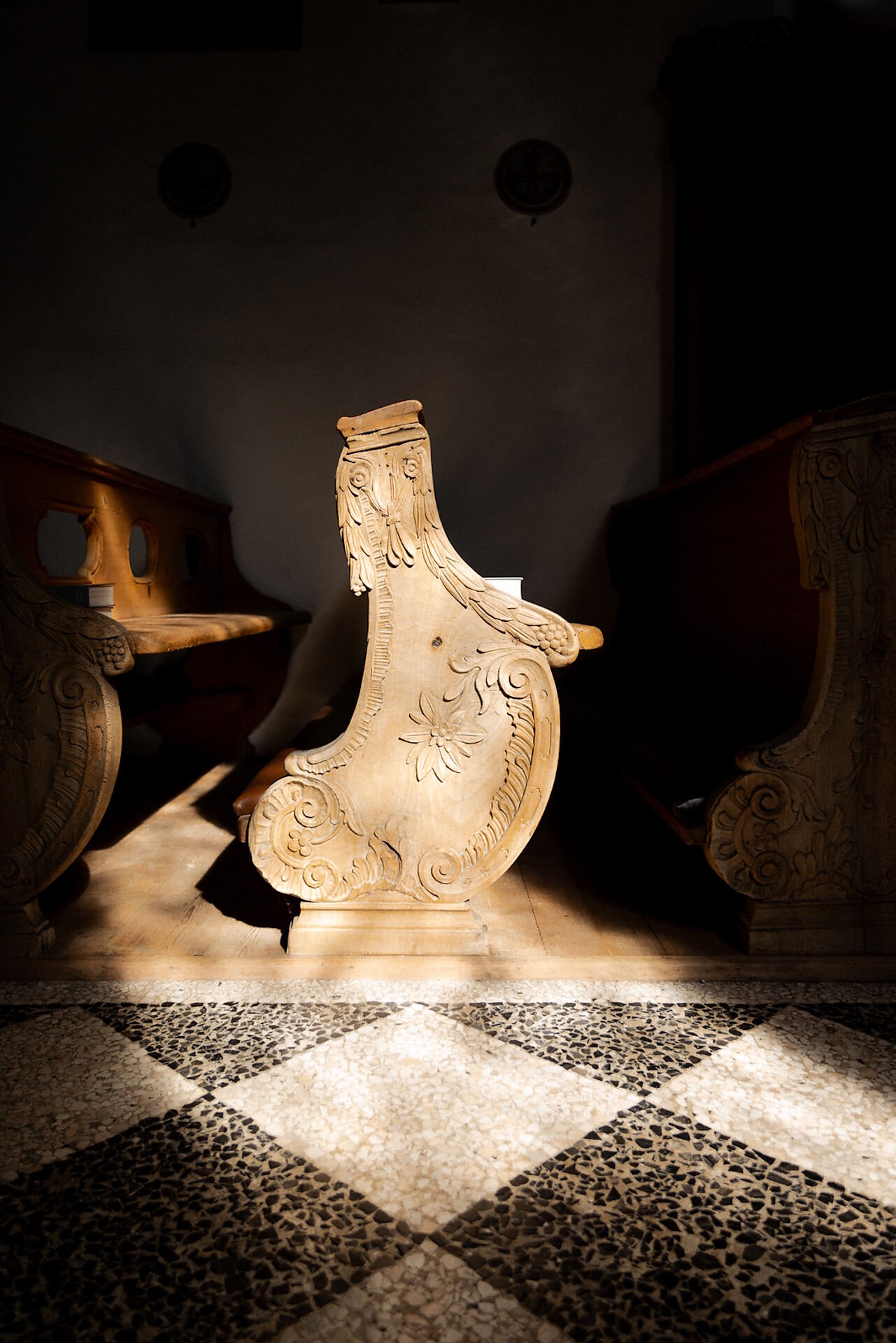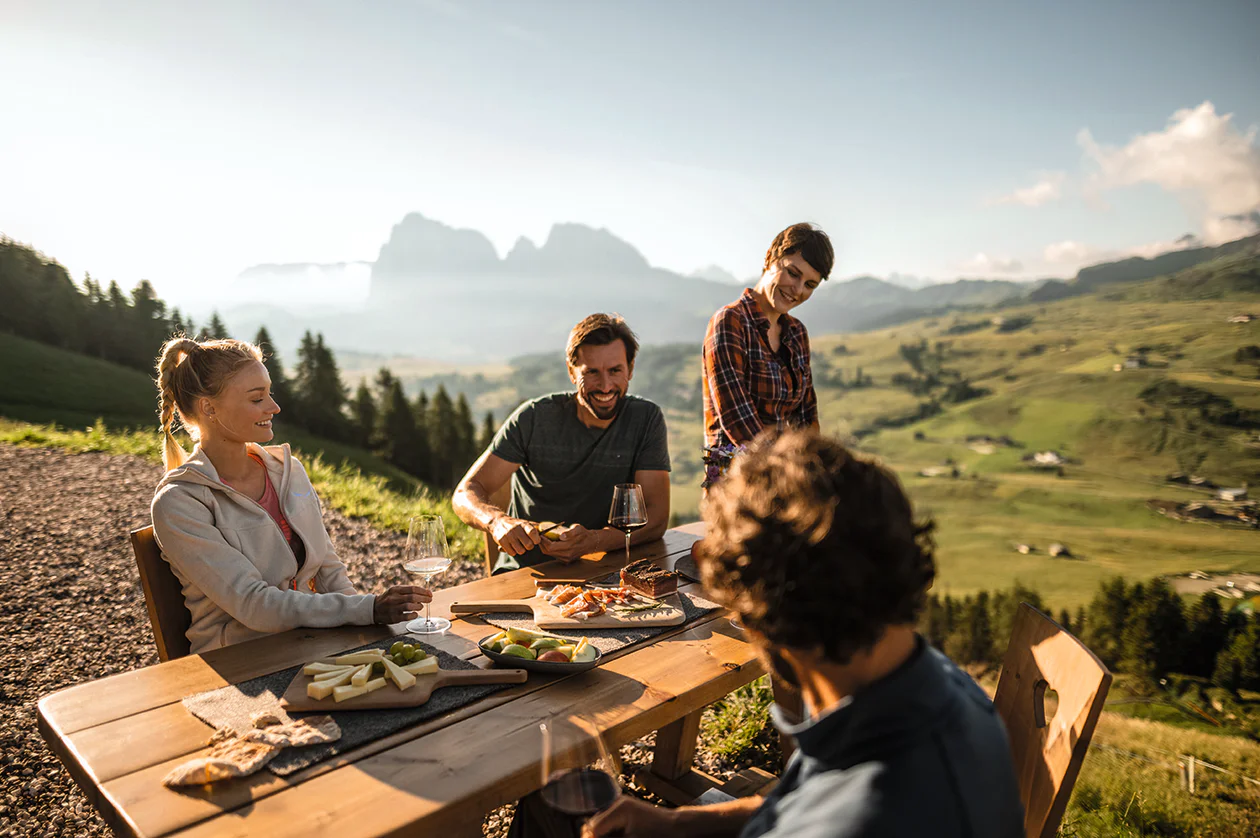The late Gothic church of Colfosco, with the Sella Massif in the background, is a popular photo motif of the Dolomites.
The parish church of St. Vigil was first mentioned in 1419. In the following years it was restored and expanded several times.
Particularly interesting are the neo-Gothic lobby on the outer facade with a grooved and beveled pointed arch portal, the bulbous spire and the church altar. This dates from the late 19th century and is from the local artist Johann Valentin - Badia. In the middle niche of the altar there is an 18th century picture of the Virgin Mary and on the sides there are the statues of St. Vigilius and St. Kassian. For safety reasons, the valuable statue of St. Vigilius has been replaced with a copy.









